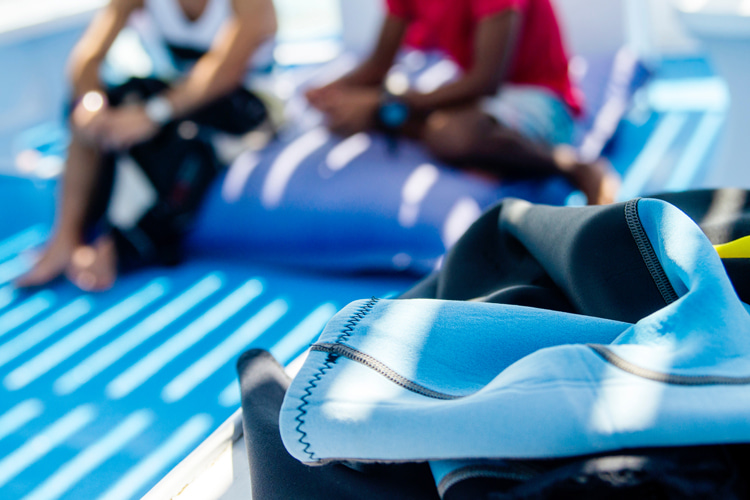The surf industry produces several types of wetsuits for different environments. Check out the wetsuit temperature guide.
Wetsuit thickness is a compromise between staying warm and comfortable in the surf and flexibility. The thicker the neoprene is, the less flexible you'll feel in the waves.
Should I wear a wetsuit if I travel to Hawaii or Australia? What is the ideal wetsuit thickness for the UK? Is a 3/2 enough for surfing in Australia? And for Southern California waves, which wetsuit should I wear?
How do you decipher the wetsuit thickness code? It's quite simple. In most cases, you'll find two numbers, but warmer models will feature three numbers. For instance, 3/2 and 5/4/3.
The first number represents the thickness of the neoprene in the trunk area. The second number indicates the thickness of the neoprene in the extremities (legs and arms).
If you find the third number, then the second represents the legs, and the third indicates the arms.
Neoprene and Temperature Chart
Here's a quick chart that will help you find the right wetsuit thickness (density in millimeters) for your average local water temperatures (in Celsius and Fahrenheit):
| Water Temperature (°F/°C) | Wetsuit Thickness (mm) | Type of Wetsuit |
|---|---|---|
| < 42 °F / 5.5 °C | 6/5 mm - 6/5/4 mm | Hooded Full Wetsuit |
| 43-52 °F / 6.1-11.1 °C | 5/4 mm - 5/4/3 mm | Hooded Full Wetsuit |
| 52-58 °F / 11.1-14.4 °C | 4/3 mm - 5/4/3 mm | Hooded Full Wetsuit |
| 58-63 °F / 14.4-17.2 °C | 3/2 mm - 4/3 mm | Full Wetsuit |
| 62-68 °F / 16.6-20°C | 2 mm - 3/2 mm | Spring Wetsuit / Full Wetsuit |
| 65-75 °F / 18.3-23.8°C | 0.5 mm - 2/1 mm | Short Arm Steamer / Wetsuit Jacket |
| > 72 °F / 22.2°C | - | Rashguard |
Remember to buy a wetsuit that fits your body closely. If it's too loose, water will invade your insulation system; if it's too tight, you'll struggle to paddle and bend your arms and legs.
When choosing the right wetsuit for an average temperature, please take into consideration secondary factors such as air temperature, wind speed, and resistance/tolerance to cold environments.
Explore our wetsuit size chart and find the best wetsuits in the world right now.
